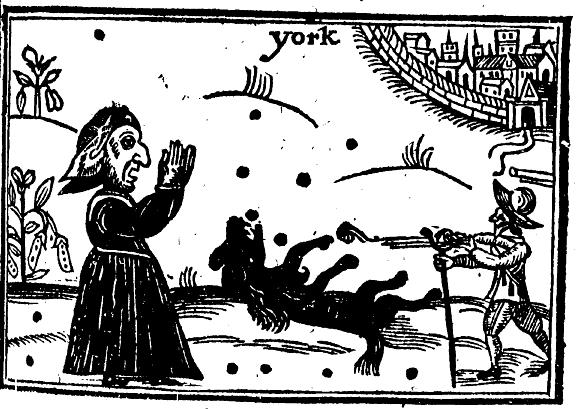Our Amazing History: Goody Garlick

The early settlers of the Hamptons made maps of their towns. East Hampton’s map in 1685 showed the same broad main street we have today, but with a wide island of grass in the middle all the way down. Carts, buggies and wagons plied the two-lane dirt roads thus created. And wood-shingled homes mostly of the saltbox design, faced one another across the twin lanes. Attendant outbuildings and barns further framed the scene. Blacksmiths, saddlemakers, wheelwrights, fabric weavers and leatherworkers had their shops here, too.
The homes on these maps indicated the family names of those living in the houses: Cooper, Herrick, Huntting, Gardiner, Osborne. Their parents came from England. They had come from New England. Also here were the meeting house and the Presbyterian church. These were, in 1657 when this story took place, a God-fearing people.
On February 23, a 16-year-old girl named Elizabeth Gardiner Howell walked over to visit her mother, Mary Gardiner, in East Hampton Village. Her father was off in a field. Her husband, Arthur Howell — for she was recently married — was also working off in a field.
Elizabeth felt a chill and began running a fever. Her mother put her to bed and asked a neighbor to fetch the doctor. But things got worse. There was nothing anybody could do. Elizabeth soon became delirious. Her mother asked the neighbor to fetch her husband Lion Gardiner. And also Elizabeth’s husband. Both were soon by Elizabeth’s side. Her new husband was hysterical and of little use. Lion told him to go home, which he did. Then Elizabeth addressed both her mother and father.
“A witch, a witch! Now you come to torture me because I spoke two or three words against you!” Elizabeth said, claiming she saw “a black thing at the bed’s feet,” presuming it was Goody Garlick, a local resident. Her father assured her it was not. Goody was a woman who everybody disliked. She was unpleasant to look at. She was a gossip and complainer. Elizabeth now screamed Goody’s name and then said no more. The next day she died.
Word was soon passed around that “Goody” (short for “Goodwife”) Garlick, was surely a witch, an agent of the devil. People drifted to the meeting house with their accusation: Goody had picked up a baby and after she put him down, he died. Garlick cast the evil eye, caused disappearances, injuries, illnesses and death of livestock. She must be brought to trial and, if convicted, burned at the stake. Bring her.
Lion Gardiner, the first settler of the community and its most respected resident, agreed to bring Goody to trial. But he also knew about the law. His nearby Gardiner’s Island had been given to him as a king’s grant with the rights of an independent colony. On Gardiner’s Island he could hang a man. But in East Hampton, such punishments could only be issued by a colonial judge. And so Gardiner told the crowd they’d have to bring Goody to Hartford, because Eastern Long Island reported to Connecticut, only later reporting to New York.
Thus, Garlick was taken to Connecticut where a judge at that higher court ruled there was insufficient evidence to burn her at the stake.
Back in East Hampton, Gardiner took both Goody and her husband under his wing. They lived the rest of their lives in East Hampton and were never troubled again.




